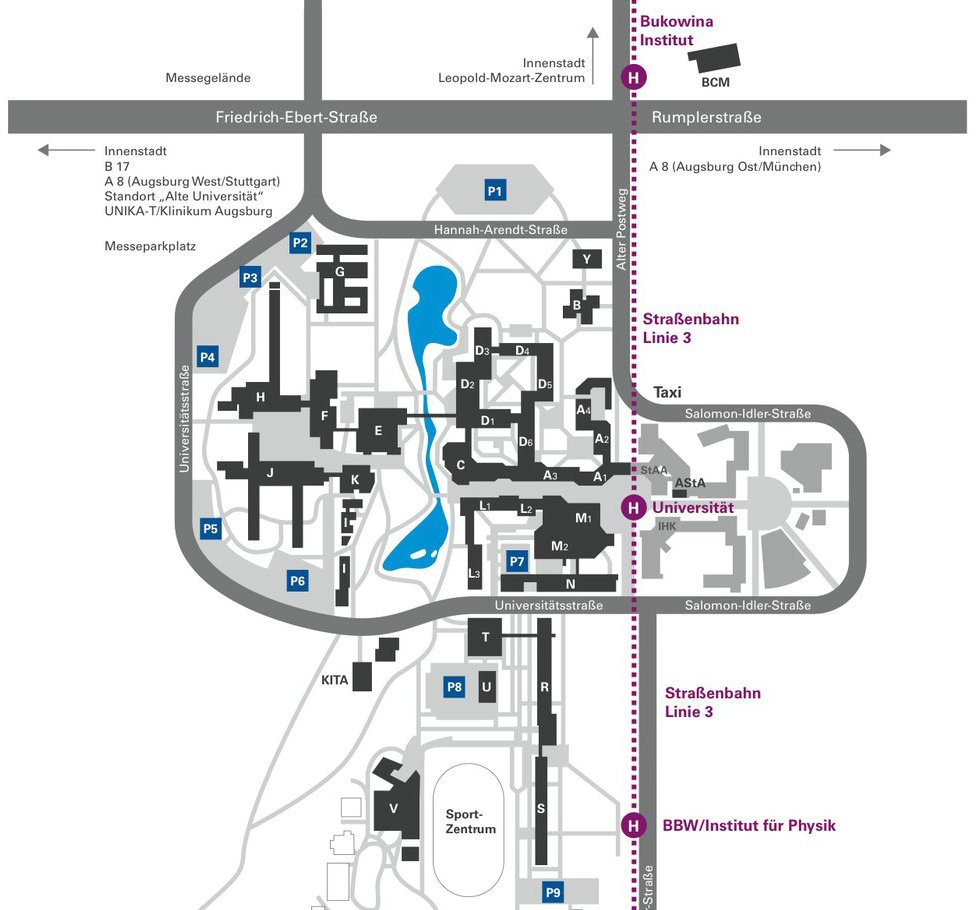Experimentalphysik I
Welcome to the Chair of Experimental Physics I at the University of Augsburg
?
As in many other areas, there has been a change in parts of materials science and classical solid state physics in recent years. Methods and processes from these disciplines are being used more and more frequently in completely different fields of research in order to create materials or systems that have completely new, previously unknown properties or functionalities.
At our chair, we research precisely such new systems that result from a symbiosis of materials science, semiconductor physics, microelectronics, photonics, nanotechnology and chemistry through to biology.
For example, the electronic and optical properties of more "classic" semiconductor layer systems, such as those already industrially manufactured in large numbers for transistors, microchips, light-emitting diodes or laser diodes, are dramatically changed by targeted lateral structuring. Lateral potential superlattices, for example, can influence the band structure of the originally used semiconductors in such a way that it is possible to store photonic signals in them for long periods, manipulate them and then read them out again in the form of light. The lateral superlattices that bring about these potential modulations are either transferred directly to the substrate using methods from semiconductor technology or are generated dynamically at the desired time in the form of "nanoquakes on the chip".
?
For this purpose, there is a clean room laboratory at the chair, in which the advance into the smallest dimensions of nanotechnology is possible under extremely low-dust conditions. In addition to various structuring and preparation methods of classic microelectronics, electron beam and optical lithography can be used to produce structures whose dimensions are only a few nanometers.
The combination of semiconductor nanotechnology with surface chemistry and micro- or molecular biology opens up further fascinating possibilities and fields of research that would have seemed unthinkable just a few years ago. For example, biochips are produced which, like their electronic counterparts, can run certain chemical or biological programs under computer control. In this way, it is possible to perform complex experiments or analyzes on a chip lab the size of a thumbnail. Applications for this can be found in the field of sensor technology, quality control of food, environmental analysis and diagnostics.
?
Most of our research work is carried out in close cooperation with various international research institutes and various companies. The work is funded by the German Research Foundation, the Volkswagen Foundation, the Bavarian Research Foundation and other institutions.
?
In addition to the course lectures, the special teaching tasks include special offers such as "Physics and Technology of Semiconductor Components", "Nanotechnology and Nanostructures", "Electronics and Photonics" as well as a large number of modern special seminars and events that bring the "pulse of the times" of science closer to the student body should.
Allgemeine Kontaktinformationen:
Anschrift:
Experimentalphysik I
Universit?t Augsburg
Universit?tsstra?e 1
86159 Augsburg
Sekretariat:
Frau Funda Gellert
Telefon: +49 821 598 - 3301 (Sekretariat)
Fax: +49 821 598 - 3225
E-Mail: funda.gellert@physik.uni-augsburg.de
?
Geb?ude: R
?


